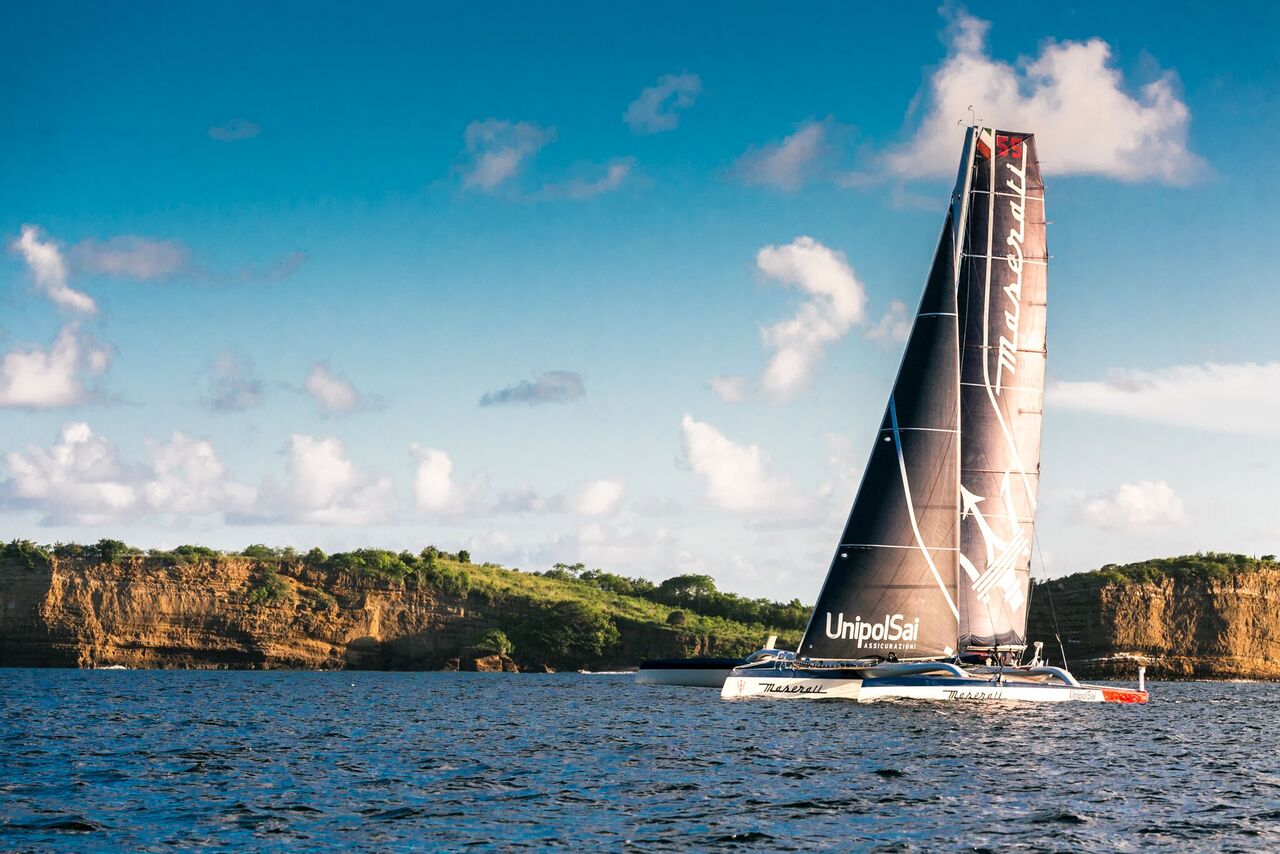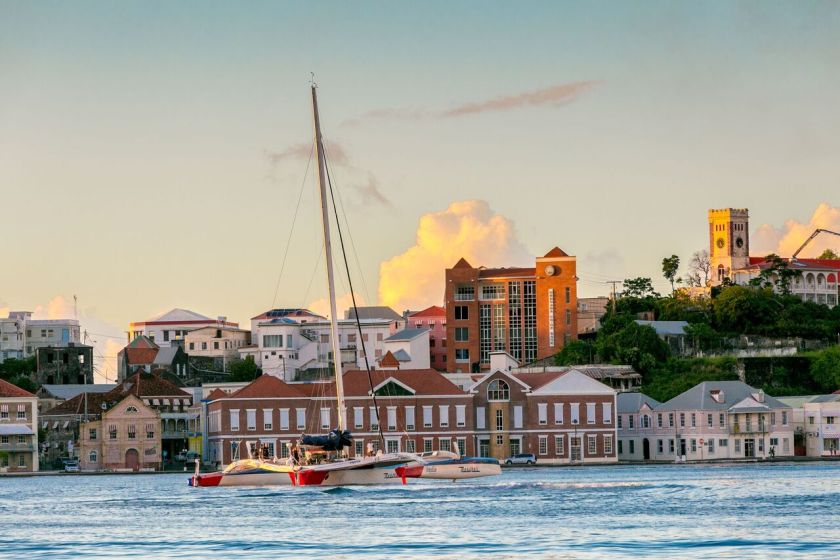
Giovanni Soldini and his team, sailing the Maserati Multi 70, just made the trip from Europe to North America in only 7 days, 8 hours, 44 minutes, and 23 seconds as part of the Royal Ocean Racing Club’s Transatlantic Race. Only a century ago, the risky trek would’ve taken weeks and probably a few lives as well.
Coming in second, the Italian trimaran fell behind the winning American team—Phaedo3 had a time of 5 days, 22 hours, 46 minutes, and 3 seconds—after hitting dicey weather on its second night. This, after the race began in Lanzarote, Canary Islands, off the coast of Morocco. The Multi 70 crossed the finish line at 4:54 p.m. on Saturday, Dec. 3.
Team Maserati—comprised of Guido Broggi, Jean-Baptiste Vaillant, Carlos Hernandez, Oliver Herrera, Francois Robert, and Francesco Malingri—braved wind gusts of up to 38 knots throughout the night. Despite this, they performed to the satisfaction of their leader. “We foiled for a couple of hours in complete darkness,” Soldini said. “Flying between the Atlantic waves at 33/36 knots with not even a sliver of moon was quite stressful, but we’re happy with how the foils are coping with the long ocean waves.”
While second place came as a disappointment to the team, it was still an impressive first bout for the high-performance racing multihull. “We are very happy with everything we learned about flying, by using an L-foil in the open ocean. We’ve found a way to use it both when there’s too much wind and, in other more changeable conditions, when it is possible to fly,” admitted Soldini.
Team Maserati was hoping the new boat would break the record for the 2,865-nautical mile race. To many, though, just completing the journey to Grenada under such adverse circumstances is a feat in itself. “The trade wind conditions that form, arriving here with a high-pressure area and a not-too-rough sea are ideal for getting a boat like ours to fly. We made an average of 24 knots with peaks of 40 and had one blistering day when we were powering along consistently at over 30 knots,” Soldini said.
Watch the stunning trimaran put the crew to work in the video above, before enjoying some more photos of the race below.

Jean-Baptiste Le Vaillant, Carlos Hernandez (Courtesy Maserati)











This article was featured in the InsideHook newsletter. Sign up now.






















